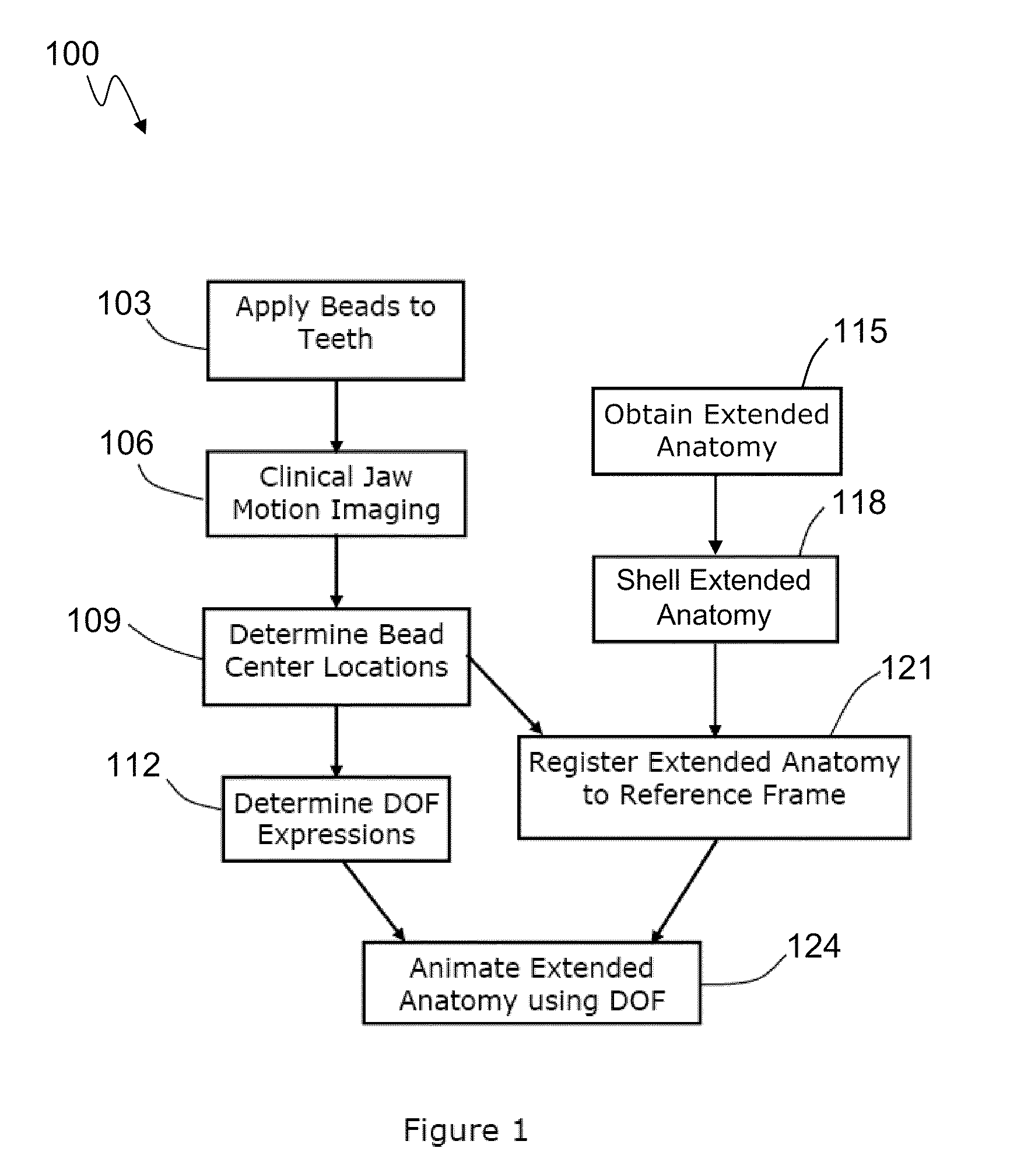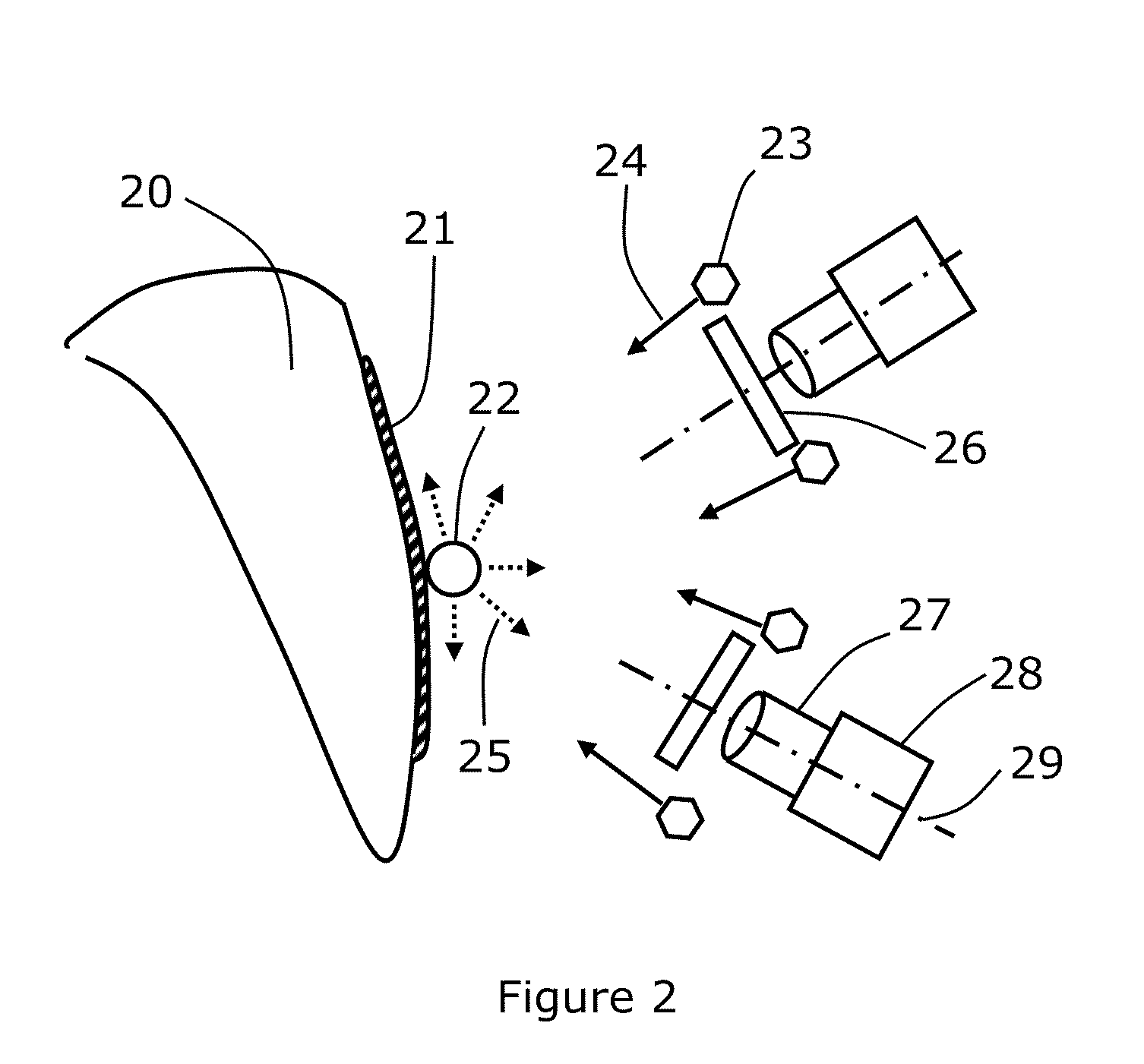Methods and composition for tracking jaw motion
a technology of jaw motion and composition, applied in the field of model jaw motion, can solve the problems of inherently disrupting an individual's natural jaw movement, affecting the accuracy of impression caps, and difficult to register data obtained from frame-based systems to complete three-dimensional (“3d”) models of dentition
- Summary
- Abstract
- Description
- Claims
- Application Information
AI Technical Summary
Benefits of technology
Problems solved by technology
Method used
Image
Examples
Embodiment Construction
[0033]FIG. 1 depicts a method 100 according to an embodiment of the present invention in which the jaw motion of a person is tracked and digitized. Steps 103-112 describe a basic jaw tracking method, and steps 109 and 115-124 describe using of the basic tracking data to animate overlapping or extended 3D oral anatomy. A plurality of microsphere targets (such as those available from Polysciences, Inc. of Warrington, Pa.) is applied 103 to a surface of a tooth on the upper dentition of the person and a tooth surface of the lower dentition of the person. The microsphere targets may also be referred to herein as microspheres and / or beads. Any number of microsphere targets sufficient for tracking may be applied to the tooth surface in a “patch.” In a non-limiting example, each tooth surface may have 1-10 beads or more. Patches may be applied to more than one tooth in each arch (upper and / or lower) of the person. For example, a patch of microsphere targets may be applied to the surfaces o...
PUM
 Login to View More
Login to View More Abstract
Description
Claims
Application Information
 Login to View More
Login to View More - R&D
- Intellectual Property
- Life Sciences
- Materials
- Tech Scout
- Unparalleled Data Quality
- Higher Quality Content
- 60% Fewer Hallucinations
Browse by: Latest US Patents, China's latest patents, Technical Efficacy Thesaurus, Application Domain, Technology Topic, Popular Technical Reports.
© 2025 PatSnap. All rights reserved.Legal|Privacy policy|Modern Slavery Act Transparency Statement|Sitemap|About US| Contact US: help@patsnap.com



